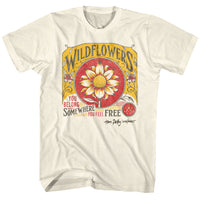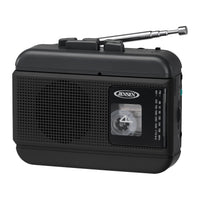8 facts you probably forgot about 8-Tracks
Learn how the cassette tapes were linked to private jets, the birth of karaoke, Fleetwood Mac and Ford Mustangs.

Image: EMI / YouTube
Vinyl is back and cassettes are fairly common, too. Heck, even reel-to-reel has a cult following amongst audiophiles. Yet one of the earliest and (briefly) most popular tape formats remains a relic of the past. The 8-Track is associated with lava lamps, bell-bottoms, long-haired rock bands and funk. The chunky tape cartridges were perfect for slotting into the broad dashboard of a boat-sized Cutlass Supreme. Some of your first boomboxes were perhaps portable 8-track players.
Here are 8 facts about 8-tracks.
1. They were developed by a jet airplane manufacturer.

William P. Lear founded the Lear Jet Corporation, giving plenty of celebrities and businesses private airplanes. The inventor gets less credit for his wonderful contributions to science. In 1964, Lear developed the 8-Track as the Lear Jet Stereo 8, an improvement on the 4-track Muntz Stereo-Pak cartridge. It's no wonder that the transportation industry would help popularize the format.
Image: AP Photo
2. In 1965, Ford first introduced players in its Mustang, Thunderbird and Lincoln models.

The first commercial 8-track players became available in September 1965, as a dash-mounted stereo option in Ford's Mustang, Thunderbird and Lincoln models. Additionally, those who'd purchased a Fairlane or Mercury could add on a "hang-on tape player." At launch, RCA released 175 titles from its back catalog, including artists like Henry Mancini and the Boston Pops.
Image: AP Photo
3. The first karaoke machine was an 8-Track player.

Daisuke Inoue, pictured, shows off his 1971 invention, the "8-Juke," a wooden box that combined microphone, amplifier, coin box, and an 8-Track tape player. Inoue claims to have sold 25,000 of the Juke 8. Sadly, Inoue, the son of a pancake maker, did not patent the device. Today, karaoke is a household word and Inoue hardly sees a dime.
Image: AP Photo/Koji Sasahara
4. There were four "programs" on each tape.

Unlike the more common cassette tape, and the bifurcated vinyl LP, the 8-Track featured four "programs," not two sides. A listener would toggle from program to program, which required the tape player to physically move its reading head. This quirky segmentation was a part of the format's downfall.
Image: 8 Tracks R Back
5. …which meant album sequences were usually shuffled and songs were split in two.

The four-program arrangement meant that album track listings had to be shuffled from their intended sequence. Take Magical Mystery Tour, pictured above, for example. "Strawberry Fields Forever," typically the second cut on Side B, kicks off the second program (to name just one of the differences). Long tracks would be split in two, as with "In-A-Gadda-Da-Vida." It wasn't all bad news, however. In some cases, music had to be added, as with the Rolling Stones' Some Girls, which extended "Miss You" and "Beast of Burden" to fill the tape. Bonus!
Image: 8 Tracks R Back
6. You could get 13 of them for a penny thanks to Columbia House.

Oh, Columbia House. How did you stay in business for so long? RCA also had a mail-order record club. We can't be the only ones who got that baker's dozen right before moving houses, bailing on that commitment to purchase more.
Image: motleynews
7. In the 1980s, many popular titles were only available on 8-Track through record clubs.

As the popularly of the format took a nosedive in the 1980s, the 8-track tape was largely relegated to such mail-order record clubs. If you were an 8-track collector and wanted hit albums like John Cougar's American Fool or the Beastie Boys' Licensed to Ill, you had to go through a record club.
Image: 8 Track Heaven
8. Fleetwood Mac's Greatest Hits is probably the last album commercially released on 8-Track.

While it is not a certainty, most collectors claim that Fleetwood Mac's Greatest Hits compilation in 1988 was the final commercially released 8-Track. There were some easy listening collections released by Readers Digest in the following year, but good luck finding another 8-Track from a big name act after Fleetwood Mac.
Image: Discogs






























6 Comments

I also had a console that recorded 8-tracks; I would sit down and add up the time from various songs so I could record them in the best order for fitting on the 4 tracks.
The biggest issue was 'cross-talk'; you get it right for one homemade tape then another would be messed up!































